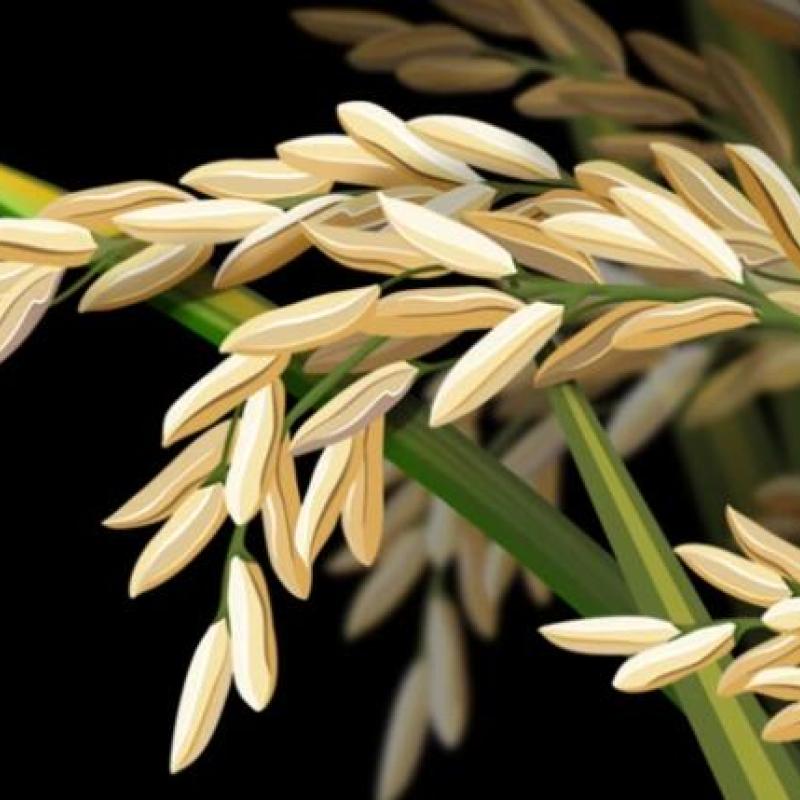Common name: AcetochlorChemical name: 2-chloro-N-(ethoxymethyl)-N-(2-ethyl-6-methylphenyl)acetamideMolecular formula: C14H20ClNO2Structural formula:Molecular weight: 269.77CAS No. : 34256-82-1Physical and chemical properties:Light brown liquid. b.p.>200℃, m.p.>0℃, vapor pressure 133.3Pa, relative density 1.11 (30℃).
Contact Now
usage:Amide selective, pre-emergence herbicide, can be applied to corn, cotton, soybean, peanut, rape, potato, sugarcane, sesame, sunflower and legume, cruciferous, nightshade, compositae, umbelliferae, etc. Control annual grass weeds in vegetable fields and orchards, and a single application keeps crops free from weed damage throughout the growing period. Not effective against perennial weeds.Common name: AcetochlorChemical name: 2-chloro-N-(ethoxymethyl)-N-(2-ethyl-6-methylphenyl)acetamideMolecular formula: C14H20ClNO2Structural formula:Molecular weight: 269.77CAS No.
Contact Now
Structural formula:Molecular weight: 449.85CAS No. : 91465-08-6Physical and chemical properties:Pure product is white solid, industrial product is light yellow solid. Steam pressure 200×10-9Pa(2.67×10-7Pa)(20℃)Specifications:95%TC, 25%EC, 25%WP, 2.5%EWPacking:25Kg fiber drum or 25 Kg kraft bag.Usage:Pyrethroid is a tactile, gastrotoxic pyrethroid insecticide. Used to control pests on cotton, vegetables, tobacco and other crops.
Contact Now
Physical and chemical properties:Chemical formula C14H20ClNO2Density: 1.1 g/cm3Boiling point: 391.5 ℃Refractive index: 1.5272 (20℃)Appearance: Light brown liquid Toxicology :1. Skin and eye irritation and toxicityRabbit skin Draize standard test: 500mg/24h2. Acute toxicityRat transoral LD50:763mg/kgRat peritoneal LD50:1200mg/kgMice transoral LD50:1550mg/kgRabbit transoral LD50:600mg/kgRabbit skin LDLo: 1260mg/kg3.
Contact Now
Thiamethoxam is a systemic insecticide in the class of neonicotinoids. It has a broad spectrum of activity against many types of insects. Thiamethoxam can be used as a seed dresser.Thiamethoxam is a broad-spectrum, systemic insecticide, which means it is absorbed quickly by plants and transported to all of its parts, including pollen, where it acts to deter insect feeding.[citation needed] An insect can absorb it in its stomach after feeding, or through direct contact, including through its tracheal system.
Contact Now
Common name: MesotrioneChemical name:2-[4-(methylsulfonyl)-2-nitrobenzoyl]-1,3-cyclohexanedioneMolecular formula: C14H13NO7SStructural formula:Molecular weight: 339.32CAS No. : 104206-82-8Product description:Mesotrione is an effective inhibitor of HPPD (4-hydroxyphenylpyruvate dioxidase), which is widely present in various organisms and catalyzes the initial reaction of plastoquinone and tocopherol biosynthesis.
Contact Now
MF: C4H8MnN2S4ZnMW: 332.71CAS: 8018-01-7Melting point of 192-194 ° CDensity of 1.92 g/cm3Vapor pressure, Negligible AT, 20 °CFlash point is 138 ° CStorage condition APPROX 4°CWater solubility 6-20 mgl-1 (20 °C)Product description:Pure mancozeb is white powder, industrial products are gray white or light yellow powder, with rotten egg taste.
Contact Now
Utilization:Acetamiprid can be used to govern aphids, planthoppers, thrips and lepidoptera pests of rice, greens, fruit bushes, tea timber, and many others. at the concentration of fifty ~ a hundred mg/l, it is able to effectively control cotton aphid, vegetable aphid, peach small fit to be eaten insect, and kill eggs.Common name: AcetamipridChemical name: N-[(6-chloro-3-pyridyl)methyl]-N'-cyano-N-methyl-acetamidineMolecular formula: C10H11ClN4Structural formula:Molecular weight: 222.67CAS No.
Contact Now
Product description:Propiconazole is a triazole fungicide, also referred to as a dmi, or demethylation inhibiting fungicide due to its binding with and inhibiting the 14-alpha demethylase enzyme from demethylating a precursor to ergosterol. with out this demethylation step, the ergosterols are not protected into the growing fungal cellular membranes, and cellular increase is stopped.Common name: PropiconazoleChemical name:1-[[2-(2,4-dichlorophenyl)-4-propyl-1,3-dioxolan-2-yl]methyl]-1H-1,2,4-triazoleMolecular formula: C15H17Cl2N3O2 Structural formula:Molecular weight: 342.22CAS No.
Contact Now
Common name: 2,4-DChemical name:2,4-dichlorophenoxy-acetic acid; (2,4-dichlorophenoxy)acetic acid; Acetic acid, 2-(2,4-dichlorophenoxy)-Molecular formula: C8H6Cl2O3Structural formula: Molecular weight: 221.04CAS No. : 94-75-7Physical and chemical properties:White crystals. Melting point is 138°C, boiling point is 160°C (53Pa). Soluble in organic solvents such as ethanol, acetone, ether and benzene, but insoluble in water. Rat oral LD50375mg/kg.Usage:Used as plant growth regulator, antiseptic and fresh-keeping agent. It can be used in compatibility with other disinfectants.
Contact Now
Product Description:Butachlor is an amide-based, conductive, selective pre-emergence herbicide, also known as noralachlor, machete, and alachlor. This product is a light yellow oily liquid with a slight aromatic odor. It is not easily soluble in water and easily soluble in various organic solvents. It has chemical stability under normal temperature, neutral and weak alkaline conditions. Its decomposition is accelerated under strong acid conditions and can be degraded in soil. Low toxicity to humans and animals, irritating to skin and eyes, and high toxicity to fish.
Contact Now
Common name: ImazapicChemical name: 3-Pyridinecarboxylic acid, 2-[4,5-dihydro-4-methyl-4-(1-methylethyl)-5-oxo- 1H-imidazol-2-yl]-5-methyl-Molecular formula: C14H17N3O3Structural formula:Molecular weight: 275.3CAS No. : 104098-48-8Product description:Imazapic is a sulfonylurea systemic conduction typepost-emergence selective herbicide. After the stems and leaves are treated, they can be absorbed by the stems, leaves and roots of weeds.
Contact Now
Physical and chemical properties:The pure product is colorless crystal and has no smell. m.p.155~156℃, relative density 1.29. easily soluble in benzene, chloroform (230g/l), acetone (80g/l, carbon disulfide and other chemicalbook organic solvents, barely soluble in ether and ethanol (<10g/l), insoluble in water (30mg/l). decomposes in acid.
Contact Now
Physical and chemical properties:The pure product is colorless crystal, m.p. 177~178℃ (decomposition), without difficulty soluble in dimethylformamide and chloroform; soluble in acetone, methanol, ethanol, ethyl acetate, dioxane; insoluble in water. stable to acid and alkali. business merchandise are light yellow crystals.Common name: Thiophanate-MethylChemical name: Dimethyl N,N′-[1,2-phenylenebis(azanediylcarbonothioyl)]dicarbamateMolecular formula: C12H14N4O4S2Structural formula:Molecular weight: 342.39CAS No.
Contact Now
Common name: Thiophanate-MethylChemical name: Dimethyl N,N′-[1,2-phenylenebis(azanediylcarbonothioyl)]dicarbamateMolecular formula: C12H14N4O4S2Structural formula:Molecular weight: 342.39CAS No. : 23564-05-8 Physical and chemical properties:The pure product is colorless crystal, m.p. 177~178℃ (decomposition), easily soluble in dimethylformamide and chloroform; soluble in acetone, methanol, ethanol, ethyl acetate, dioxane; insoluble in water. Stable to acid and alkali.
Contact Now
Usage:Systemic conduction broad-spectrum herbicide. It mainly inhibits the enol acetonyl shikimidin phosphate synthase in plants, thereby inhibiting the conversion of shikimate to phenylalanine, tyrosine and tryptophan, which interferes with protein synthesis and causes plant death. It was originally used in rubber plantations to control thatch and other weeds, which can make rubber trees tapped one year earlier and are produced by old rubber trees. It is now gradually spread to forestry, orchards, mulberry gardens, tea gardens, rice-wheat, rice and rapeseed rotation fields.
Contact Now
Chemical formula: C6H12N2S4Molecular weight: 240.433CAS no. : 137-26-8 Chemical properties:Pure product is colorless crystal, no smell. M.p. 155 ~ 156℃, relative density 1.29. Easily soluble in benzene, chloroform (230g/L), acetone (80g/L, Chemicalbook carbon disulphide and other organic solvents, slightly soluble in ether and ethanol (& LT; 10g/L), insoluble in water (30mg/L). It breaks down in acid. Industrial product is white or light yellow powder, M.P.
Contact Now
Product description:Pendimethalin is an herbicide of the dinitroaniline magnificence used in premergence and postemergence programs to manipulate annual grasses and sure broadleaf weeds. it inhibits mobile department and cellular elongation.
Contact Now
Product description:Carbendazim is a broadly used, systemic, vast-spectrum benzimidazole fungicide and a metabolite of benomyl. it is also hired as a casting worm control agent in amenity turf situations together with golf greens, tennis courts etc. and in a few international locations is licensed for that use most effective.Common name: CarbendazimChemical name: Methyl (1H-1,3-benzimidazol-2-yl)carbamateMolecular formula: C9H9N3O2Structural formula:Molecular weight: 191.19CAS No.
Contact Now
Common name: Bispyribac-sodiumChemical name: 2,6-Bis((4,6-dimethoxy-2-pyrimidinyl)oxy)-benzoic acid sodium salt Molecular formula: C19H17N4NaO8Structural formula:Molecular weight: 452.35CAS No.
Contact Now
Common name: TriclopyrChemical name: [(3,5,6-trichloropyridin-2-yl)oxy]acetic acidMolecular formula: C7H4Cl3NO3Structural formula:Molecular weight: 256.47CAS No. : 55335-06-3Physical and chemical properties:The pure product is a white crystalline solid. m.p.148~150℃, decomposition temperature 290℃. The vapor pressure is 1.68×10-4Pa. It is soluble in organic solvents such as ethanol, and its solubility in water at 25°C is 430~440mg/L.
Contact Now
Common name: ImazamoxChemical name:(RS)-2-(4-isopropyl-4-methyl-5-oxo-2-imidazolin-2-yl)-5-methoxymethylnicotinic acidMolecular formula: C15H19N3O4Structural formula:Molecular weight: 305.33CAS No. : 114311-32-9 Physical and chemical properties:This product is solid. m.p.166~166.7℃, vapor pressure<1.3×10-5Pa. The solubility is: methylene chloride 14.3g/100L, methanol 6.68g/100L, acetone 2.93g/100L, acetonitrile 1.85g/100L, ethyl acetate 1.02g/100L, n-hexane 0.0006g/100L, partition coefficient 5.36 (25℃) ).
Contact Now
Structural formula:· Molecular weight: 255.66· CAS No. : 105827-78-9Physical and chemical properties:Pure product is white crystal, M.P. 143.8℃ (A), 136.4℃ (B), vapor pressure 2×10-7Pa (20℃)Specifications:97%TC, 25%WP, 10%WP, 70%WP, 35%SC, 60%FCProduct description:Imidacloprid is a systemic insecticide belonging to a class of chemicals called the neonicotinoids which act on the central nervous system of insects. The chemical works by interfering with the transmission of stimuli in the insect nervous system.
Contact Now
Common name: Metsulfuron-MethylChemical name: 2-(4-methoxy-6-methyl-1,3,5-triazin-2-ylcarbamoylsulfamoyl) benzoic acidMolecular formula: C14H15N5O6SStructural formula:Molecular weight: 381.36CAS No. : 74223-64-6Product description:Metsulfuron is an ultra-low dosage sulfonylurea herbicide for controlling medium-broad-leaved weeds in cereals. It can be transferred upward and downward in the plant body and used as a herbicide before and after wheat sprouts.Physical and chemical properties:The pure product is a white crystalline solid. m.p.158℃(163~166℃), vapor pressure 3.3×10-10Pa(25℃).
Contact Now


































